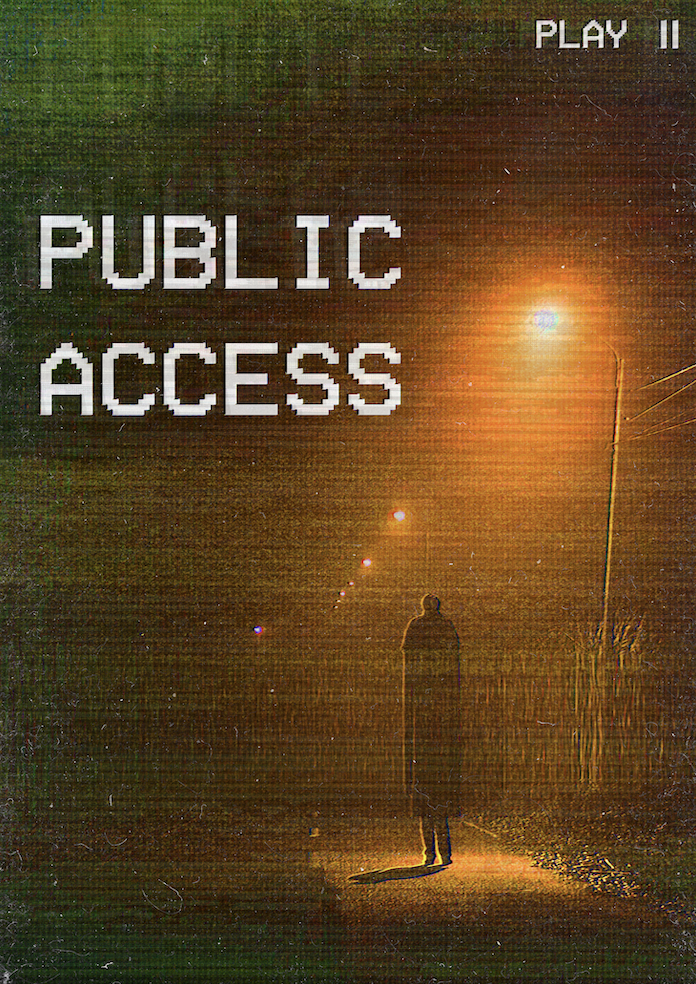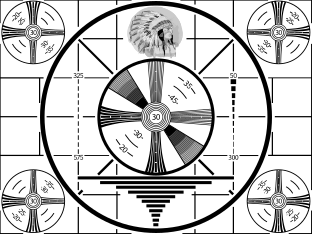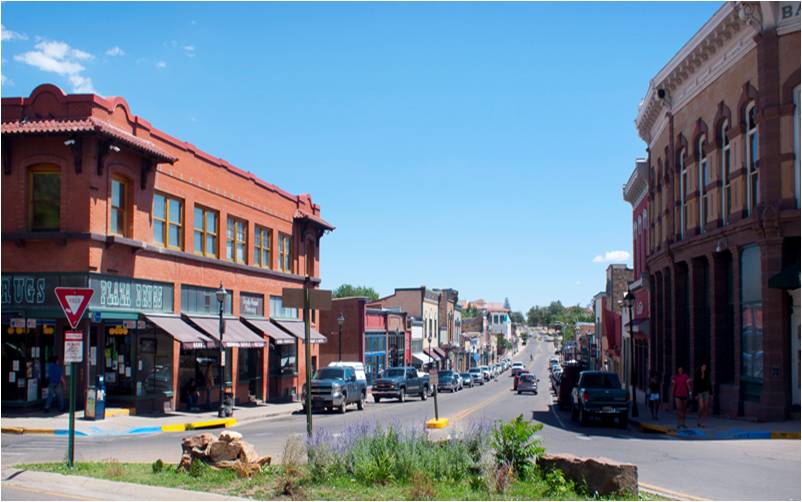Be Kind, Rewind: A Review of The Gauntlet's Public Access
Much earlier this year, I came across references to a new RPG from the Gauntlet, a group whose podcasts I’ve been listening to for several years now. They’re a group of people who run, review, and publish role playing games. Originally based out of Austen, Texas, they have largely moved online. The RPG in question was a new game from designer Jason Cordova, Public Access, and and I paid the $15 to get the pdf of it as soon as I saw it had gone live.
It took me months to get a group together to play it. Most people interested in role-playing games that I’ve found have what I tend to characterize as a “trad” mentality: they were weaned on games that emphasize granular — if not accurate — simulation of events. The flagship of this genre is Dungeons and Dragons, though given the recent behavior of that game’s publisher, their stranglehold on the hobby has somewhat lessened.
The first group that I put together met for one session, right after I returned from a trip abroad and then spent a week recovering from COVID. As part of the deal, I had a bad case of laryngitis, which I tried (and failed) to power through. Immediately subsequent to that, two of the three players in this group went through the process of selling their house and moving across town, and they are currently slated to get married in ten days.
It took me another two months to find a group that was willing to give it a shot, and they’re about to go on hiatus because the holidays tend to be a busy season for most people involved — and stretch from mid-October to January. However, now that I’ve seen the game in action, I can talk about how it unfolds.
※
System
The origin of PbtA is, of course, Apocalypse World by Vincent and Meguey Baker — their own conception of what makes something “powered by the Apocalypse” is quite different from the community at large.
Let’s get the basics down: mechanically, Public Access is called a “Carved From Brindlewood” game, a mechanical descendant of “Powered by the Apocalypse” games. I’m a fan of the base system, not just because I prefer the tendency towards “messy successes” that lead to the narrative growing more complicated. I enjoy the fact that it automates much of the drudgery that Dungeons and Dragons and its descendants force on to the facilitator. You plan only in a minimal fashion — instead, you unfold the narrative as the players move through it.
Public Access and other Carved From Brindlewood games — including the eponymous Brindlewood Bay, which is sort of a Post-Lovecraftian take on Murder She Wrote, and The Between, which is an emulation of the Victorian Monster Hunter genre (Penny Dreadful, The League of Extraordinary Gentlemen, etc.) — add a number of fascinating elaborations to the system.
These games are all mystery games, and mystery RPGs often devolve into a rather limp sort of game — “guess what the facilitator is thinking or exhaust them until they just tell you.” This cannot happen with a Carved from Brindlewood game, because the facilitator does not know. None of the mysteries have a canonical answer: instead, players must gather appropriate clues for each mystery, and then synthesize these into an answer. This brings the spitballing, brainstorming, and speculation which people enjoy about watching mysteries into the magic circle of the game, making it a load-bearing element to play. This, alone, is worth the price of admission for any of the games.
Other mechanics, though, are even useful beyond the mystery genre: each Carved from Brindlewood game forbids out-of-character discussion of character background. Instead, there are mechanical prompts that require the player to narrate flashbacks in exchange for certain mechanical benefits — there’s a slight bias towards player failure in Carved From Brindlewood games, and each player can “turn a key” and follow a prompt for a flashback or a change to their character to increase the degree of success, undoing the failure. This drips in character background, but also shapes what that background is to a certain extent. In Public Access, the first three such prompts are "A flashback showing your latchkey kid routine whenever you got home from school"; "A flashback showing how you were and outsider among your school peers"; and "A flashback to the moment when you realized your parents were imperfect."
This is masterful, because it leaves a great deal of freedom to interpret, while also defining the “genre” of character in play, and also brings another element into the magic circle of the game — notably, revealing a character’s backstory, which often is paratextual to the game being played.
Finally, the game instructs the facilitator to declaim decision making and pass it along in a standardized fashion: whenever the characters enter a new location, the facilitator asks a “paint the scene” question, asking the players to fill in elements of the location: these are guided by the facilitator to some extent. For example, the initial mystery, “The House on Escondido Street” asks about a stand of ponderosa pines something along the lines of, “what about them makes you think that the evil in this place isn’t just in the house but in the land itself?” Another place where this shows up is in the standard “Day” and “Night” moves, which prompt the Facilitator to ask, “What are you afraid is going to happen?” before the player rolls, with that either being the penalty for failure (day move) or the penalty being similar to that, but even worse (night move).
※
Story
It is the Summer of 2004, in the town of Deep Lake, New Mexico, located in (the fictitious) Degoya County. Deep Lake has a population of 5,000 in the off season, swelling up to 10,000 in the tourist season. Back from the late 1970s to 1992, Deep Lake was home to TV Odyssey, a famous public access cable station, putting out fascinating, memorable, and occasionally terrifying programming.
It disappeared one day in 1992, leaving no physical trace, save for the occasional appearance of mysterious “Odyssey Tapes”, white VHS cassettes that have recordings of one show from the station. These tapes cannot be copies, and cannot be watched during the day, for whatever reason.
The player characters — who all met on a message board dedicated to the station — all have memories of TV Odyssey, and have concocted a plan to go back to Deep Lake and investigate the disappearance. That mystery is slow going, but thankfully, there is plenty of other “scooby doo shit” (as one very tired NPC in my game put it) for the characters to focus on.
The game is consciously emulating the “analog horror” genre which became much more popular during the pandemic, and which I know primarily through a proto-example Marble Hornets. It consciously makes references to various horror films of the 1980s (I caught references to Poltergeist, Friday the 13th, Stuff, Stephen King’s It, and a number of others) and this mixture brings in a kind of uncanny nostalgia that my group found extremely engaging. The Odyssey Tapes themselves are quite fascinating unfolding as a kind of “minigame” for the players where they take prompts and elaborate on them, creating something like the sort of video art that one might produce if they lived in a cosmic horror universe.
I was drawn to this setting because — from 2009 and 2011 — I lived in Las Vegas, NM. So my own version of Deep Lake is less desert and more the southern slopes of the Sangre de Cristos. It’s the smallest town I ever lived in and I’m not sure I would do so again.
The thought occurs — if I ever get the time and space — that I might write an unofficial add-on to the game at some point, set four years after the Latchkeys returned to Deep Lake and performed their investigation, about the production crew of the first generation of podcast — all people desperate and ruined by the financial crisis — who took a job to go and produce a show about what happened to a small group of hapless twenty-somethings that raised hell around town for one summer investigating an urban legend, and then disappeared under mysterious circumstances.
Of course, I lack the production skills to make such a module something polished, and I’d want to get a much better handle on the system before trying.
※
Critique
Before I get into this final main section, I want to emphasize my love for this game. I adore how it works, and I will be running it many more times.
However, there are certain things that proved to be difficult for both me and my players. First and foremost, a communication issue: this game is written for people already familiar with Powered by the Apocalypse games and who have internalized the play style. I had to explain the “Dawn Questions” portion, which controls advancement, three times before my players began to get the hang of it. Likewise some additional scaffolding — or even a play example — on how the Nostalgia move functions would be beneficial.
This, however, is mostly a technical writing problem and could be fixed with a text revision.
Perhaps more of an issue is what I’m thinking of as the “Springfield Effect,” which often crops up in fiction about small towns written by people that don’t live there (and I don’t know the history of any of the writers, so perhaps I’m speaking out of turn on this). When the Springfield effect is present, the “small town” element becomes an aesthetic, rather than an actual condition — Deep Lake only has 5,000 people in the off season, but every mystery comes with a passel of characters and locations, and it would be easily possible to run through a dozen mysteries if your players lose sight of the TV Odyssey mystery. This could give the sense that Deep Lake is a bustling city, contrary to what the text says.
If I were to propose a fix for this, I might recommend encouraging facilitators to pre-select the first five or six mysteries (the game only allows you to have three active mysteries and having a couple “on deck” would mean that there are some locations with no mysteries), and have a small list of locations from those mysteries available beforehand (for example, the mystery “Dog Told Me To” has a coffee shop in it, and that mystery is tied to the time of summer around July 4 — why not establish before hand that this shop is across the street from the Galaxia Arcade, features in the mystery “XXXAGREUS”, which might crop up much sooner?). Knowing what’s in the town would be a big help in making the community feel alive.
On a more meta-level, it would probably have been helpful to find a way to reuse some locations between mysteries — not in a “recycling” sort of fashion, but in a way more congruent with a small town, which would notably have only a few locations within it.
※
On the whole, I feel comfortable recommending this game to other people looking for a sharp departure from Dungeons and Dragons and similar games, but I might feel a bit reserved about doing so to a group unfamiliar with the original forms of Powered by the Apocalypse games.
If you’re interested in giving it a try, you can find it here.
※
If you enjoyed reading this, consider following our writing staff on Twitter, where you can find Cameron (Bluesky link; not much there yet) and Edgar (Bluesky link). Just in case you didn’t know, we also have a Facebook fan page, which you can follow if you’d like regular updates and a bookshop where you can buy the books we review and reference (while supporting both us and a coalition of local bookshops all over the United States.) We are also restarting our Tumblr, which you can follow here.
Also, Edgar has a short story in the anthology Bound In Flesh, you can read our announcement here, or buy the book here





